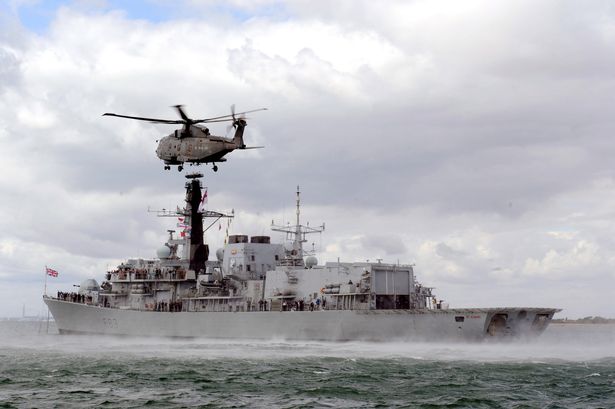HMS St Albans, a Type 23 Duke-class frigate of the Royal Navy, recently underwent a rigorous training exercise off the coast of Wales designed to test and enhance its defenses against a rapidly evolving threat: drone swarms. The exercise, conducted this month, subjected the frigate to a barrage of over 100 simulated drone attacks, pushing the ship’s systems and crew to their limits in a complex and demanding scenario. This intensive training reflects the growing recognition of unmanned aerial vehicles (UAVs), commonly known as drones, as a significant and evolving challenge to naval operations. The exercise provided invaluable experience in countering this increasingly sophisticated form of asymmetric warfare, focusing on the unique difficulties posed by large-scale drone deployments.
The increasing proliferation of affordable and readily available drone technology has presented navies worldwide with a complex defensive puzzle. Small, unmanned aircraft, individually inexpensive and easily deployable, can be launched in swarms, overwhelming traditional defense systems designed for larger, more conventional threats. This ‘saturation attack’ strategy aims to overwhelm defenses by sheer numbers, increasing the likelihood of at least some drones penetrating and potentially inflicting damage or disrupting operations. Furthermore, drones can be adapted to carry a variety of payloads, from surveillance equipment to explosives, making them a versatile and potentially devastating tool in the hands of hostile actors. The exercise involving HMS St Albans directly addressed these concerns, simulating the challenges posed by a coordinated drone swarm attack and allowing the crew to develop and refine tactics to mitigate this emerging threat.
The specific details of the exercise, while not fully disclosed for security reasons, likely involved a multi-layered defense strategy. This would have incorporated existing shipboard systems like close-in weapon systems (CIWS), electronic warfare measures, and potentially directed energy weapons, alongside newer technologies specifically designed to counter drone swarms. The exercise provided a crucial opportunity to evaluate the effectiveness of these systems in a realistic scenario, identifying strengths and weaknesses in the ship’s defensive posture. It also provided invaluable practical experience for the crew, allowing them to hone their skills in detecting, tracking, and neutralizing multiple, fast-moving targets simultaneously, a critical skill in the age of drone warfare. The lessons learned from this exercise will undoubtedly inform future training programs and the development of new counter-drone technologies within the Royal Navy.
Beyond the technological aspects, the exercise also highlighted the crucial role of human factors in countering drone swarms. Effective defense requires seamless coordination between different teams on the ship, rapid decision-making under pressure, and the ability to adapt to rapidly changing tactical situations. The exercise provided a valuable platform for the crew to practice these essential skills in a controlled environment, enhancing their ability to work together as a cohesive unit. The experience gained will also contribute to the development of standardized operating procedures and best practices for dealing with drone swarm attacks, ensuring a consistent and effective response across the fleet. The exercise underscored the importance of continuous training and adaptation in the face of evolving threats in the maritime domain.
The implications of this exercise extend beyond the immediate defense of naval vessels. The lessons learned are relevant to protecting other critical infrastructure, both at sea and on land, from potential drone attacks. Ports, offshore oil and gas platforms, and even coastal cities could be vulnerable to such attacks. The experience gained by HMS St Albans can be shared with other branches of the military and civilian agencies responsible for protecting these assets, contributing to a more comprehensive national defense strategy against drone threats. Furthermore, international collaboration and information sharing are essential in addressing this global challenge. The insights gained from exercises like this can be shared with allied nations, fostering a collective understanding of the evolving drone threat and promoting the development of effective countermeasures.
In conclusion, the exercise involving HMS St Albans served as a crucial test of the Royal Navy’s preparedness for the emerging threat of drone swarms. It provided a valuable opportunity to evaluate existing and developing counter-drone technologies, enhance crew training, and refine tactical procedures. The lessons learned from this exercise will inform future development and training programs, ensuring that the Royal Navy remains at the forefront of naval defense in an increasingly complex and challenging maritime environment. This proactive approach to training and development is essential in maintaining a credible deterrent against potential adversaries and ensuring the continued security of maritime operations in the face of rapidly evolving technological threats. The exercise underscores the Royal Navy’s commitment to adapting to the changing landscape of modern warfare and maintaining its operational effectiveness in the 21st century.














